Travel to Beijing, China – Episode 638
categories: asia travel
Hear about travel to Beijing, China as the Amateur Traveler talks to Daniel Rickleman who calls Beijing Home.
subscribe: rss feed | Apple podcasts
right click here to download (mp3)
right click here to download (iTunes version with pictures)
Sponsor
This episode of Amateur Traveler is sponsored by The Trip podcast: Drinking with Exceptional People Around the World
Show Notes
Why should someone go to Beijing?
- The History, which can be seen in the central layout dating back to the 13th Century when Khublai Khan established the city for the Mongolian rule of China under the Yuan Dynasty. It’s a very Chinese cliché, but the ‘old with the new’ , from old alleyways to modern CBD skyscrapers.
- Beijing is a great window into all kinds of Chinese culture and regional food.
- The Gravity and energy of the place. Being the home of the Chinese Government gives Beijing a sense of seriousness that other places don’t have. And anywhere that has 20 million people will have some kind of interesting sense about it.
What would you recommend for one week in Beijing?
Mix up the big sites with the little ones and random walks through the older districts. Avoid ‘temple and palace fatigue’ and too many crowds, and avoid spending too much time sitting in traffic only going to major sites.
- Get a universal plug adapter
- Book Your Accommodation HERE
- Search for Great Tours HERE
- Buy Travel Insurance
- Get an eSim to be able to use your smartphone abroad.
- Get a Car Rental

What should you see?
- Forbidden City and Jingshan Park – Former Imperial Palace home to Chinese Dynasties up to 1911. Jingshan Park is immediately to the north and its Coal Hill is the highest point in Beijing. It was constructed from the material excavated to form the Forbidden City moat and provides a 360 view including over the Forbidden City.
- Tiananmen Square – Large square with the National Museum to the east and Great hall of the People to the west.
- National Museum – Good permanent collection as well as temporary exhibitions. The ground floor has chronologically ordered artifacts through China’s history.
- Qianmen Walking Street begins at the southern end of Tiananmen Square. Touristy and crowded, but does have typical Beijing snacks and food. Recommended to explore the quieter hutongs off to the east of west of the main north-south street.
- Temple of Heaven – a ceremonial temple with a circular design very different to the Forbidden City and other temples.
- Summer Palace – Expansive palace and temple complex to the in the NW of Beijing that includes a large man-made lake.
- Great Wall if China. Highly recommend doing a hike or even overnight camping rather than just visiting Mutianyu.
- Lama Temple – Tibetan Buddhist Temple with 60ft(18m) tall Buddha carved from a single sandalwood tree trunk, which took 3 years to be transported from Tibet to Beijing.
- CBD – Guomao, mainly for the ‘Pants Tower’. Walk from Guomao through ‘The Place’ and to Parkview Green, an award-winning mall full of interesting and frequently rotated contemporary art in galleries and large sculptures throughout the mall.
- Sanlitun restaurant/bar area – for the best range of restaurants from all over China, this is a good choice. Taikooli complex, Nali Patio, or Topwin Center just south of the Intercontinental have good clusters of Chinese and western restaurants.
What do the guidebooks recommend that you think are a waste of time?
- Nanlouguxiang hutong itself – shoulder-to-shoulder crowded and un-interesting tourist kitschy shops. Wander the quiet hutongs that run east or west instead.
- Wangfujing walking street, unless you want to do the scorpion/bee larvae eating, its juts a crowded walking/shopping strip popular with Chinese tourists.
- Olympic Park, unless you’re an architecture nut (the Bird’s Nest stadium is impressive), the area surrounding the stadium and Watercube is un-interesting.
- Trying to see every last temple, palace, courtyard, etc. At some point they all look the same – temple fatigue is real. Choose a few then diversify into other things.
- Beware of day trips or overnight tours to places like Yesanpo (Shidu Nature Park), Huairou (Honglou ‘ Red Snail’ Temple) Autumn Leaves Festival in SW Beijing Hills, Beidehe Where the Great Wall meets the sea).
What do the guidebooks/tourists miss?
- Get lost in the hutongs. Two main areas (though there are others)
- Between Lama Temple and the Drum and Bell Tower and around Houhai/Qianhai lakes.
- The areas to the east and west of Qianmen Walking Street.
- Hike or camp (warmer months) the great wall. No or few people, unrestored parts can even have trees growing on them and be half fallen down but it feels authentic and gives a better sense of its age. Ideal routes are those that pass through both unrestored and restored sections. Eg Jiankou to Mutianyu, or Gubeikou to Jinshanling. See Beijing Hikers for excellent guided hikes that included a bus to and from.
- Walk around the Forbidden City Perimeter moat at night. Will pass between the entrance and Tiananmen Gate. Very few people except joggers, dog walkers, and maybe people fishing in the moat.
- CBD. CCTV ‘Pants’ Tower is truly impressive. For views of the city go up the China World Summit Wing building to floor 79 restaurants and bar. Also the Yintai Centre’s Park Hyatt Bar.
- Ming Dynasty Wall – Segment of the Beijing city wall that was left in place along with a large watchtower, just south of Beijing railway Station. The old observatory is near here as well.
- 798 – art district in a renovated old industrial compound. It could either be under-whelming to some or be a nice distraction from too many temples and old-sites.
- Jingshan Park. In the guidebooks but should be ranked higher. Immediately to the north of the Forbidden City, the main feature is a hill that rises up and overlooks the Forbidden City to the south. Was constructed using the earth excavated to create the FC moat. Gingko yellow leaves.
And if you are still in the mood for more temples and Parks….
- Miaoyingor White Pagoda Temple (Baita Si) – out-of-the-way and quiet Buddhist temple with impressive white Stupa that seems way out of proportion to the temple and surrounding hutongs. Try BearBrew Coffee rooftop next door for a cool view.
- Fayuan Si – oldest Buddhist temple in Beijing first established in 645. It can combine with the nearby Muslim street for food and the largest Mosque along Niujie (Cow street).
- Zhongshan Park – just west of Tiananmen Gate – in late October/Early November for the amazing golden Gingko Tree leaves. Also the Marriage Market on the northern end next to the Forbidden City Moat on Sunday afternoons.
- Tanzhe Temple – 55 kilometers away from central Beijing (would need a whole day). A bit of effort to get to but picturesque temple complex nestled in the hills. Especially pretty in fall.
Two Beijing walks
Old Beijing Walk
-7 miles (11 km)
Passes through 3 Areas:
- Old Inner City and Imperial City Hutongs
- Parks and perimeter of the Forbidden City, Tiananmen Square
- Qianmen and Outer City Dashilan hutongs.
New Beijing Walk
-3 miles (4.8 km)
Passes through 3 Areas
- Guomao CBD
- Malls
- Sanlitun bar and restaurant area.
- Maybe 798 Art District
What should you eat?
Number 1 is Beijing Duck, two well-known chain restaurants. Quanjude and Da Dong.
Other Beijing local food is a style of hotpot done in a brass conical stove type thing with hot coals inside. Unlike the famous Sichuan hotpot, it is not spicy.
Beijing Snack food. Stomach. Candied hawthorn fruit, like toffee-apples. Easy to find around Xinyukou street off Qianmen walking street or generally around Qianmen. Other Beijing things, pot-set yogurt, Arctic Ocean soft drink.
Non-Beijing specific recommendation, Jianbing.
Also, although not originating from Beijing, Chuaner (Chinese kebab, mainly lamb, also vegetables and mushrooms on skewers flame-grilled or cooked in hotpot) is a very popular food in Beijing.
Street food. For ‘weird’ foodie scorpions, bee larvae, sparrows – an alley off Wangfujing walking street.
Suggest using Beijing to sample a whole range of Chinese regional cuisine. From Hunan (my current favorite), Sichuan (oily and Spicy), Yunnan (freshwater fish, tofu, rice noodles, rose cakes), Shaanxi Noodles (simple dry noodle with vegetables and pickle/chili), Lanzhou Beef Noodles (simple noodle soup with beef).
Finding food
Timeout, That’s Beijing, The Beijinger sites for great restaurant/bar reviews and suggestions. Also good for all other info on Beijing including events.
The best place for finding these are this is around Sanlitun restaurant/bar/shopping area. Otherwise, big shopping malls will often have a surprisingly good range of options, either in the basement or top floors.
Dianping is the Chinese Yelp equivalent. All in Chinese but you type in English and see search results with rations and photos and address/map location.
Drinking
Craft beer
Chinese do not have a bar culture, nearly always only drinking with food. But in recent time craft beer places have started to arrive and are popular with younger people. A great little beer garden in a hutong courtyard between Nanlouguxiang and Houhai Lake is Great Leap Brewing (Doujiao Hutong Shop). Don’t confuse with the Xinyuanli branch, which is not in the hutongs. In Sanlitun, Slow Boat Brewery, just south and across the road from the Intercontinental. Jing-A, Arrow Factor.
Heaven Supermarket is one of the least popular and low-cost bars left in Sanlitun.
Chinese national Spirit is called Baijiu (literally ‘white liquor’). It 28 to 65% alcohol. Famous Brands are Erguotou and Moutai. Drink with food.
How do you get around?
Map Apps – Google Maps needs a VPN to work. Apple Maps works well, except that addresses are shown in pinyin rather than Chinese characters. But it does give you an option to ‘open in Amap’, which then opens a window all in Chinese characters and displaying the Chinese name and address. Another workaround is if you have the Dianping the food app installed and the location you are searching is in that app, Apple Maps will give you a button to open any location in Dianping and there you’ll have the address in Chinese Characters.
Subway
Didi Chuxing – Chinese Uber equivalent. In English.
Mobike – Bike-sharing app. In English.
What side trips would you recommend?
Chengde Mountain Resort – the former resort of the Qing Dynasty Emperors, modeled on Potala Palace in Tibet. 4.5 hours train, or 4-5 hours bus ride away
Zhangjiakou – if you want to ski, this is where the Beijing Winter Olympics will be held in 2020. About 3-hour drive from Beijing. A fast train will be ready in time for 2020. I’ve not been and it is quite small slopes, but maybe worth it for the novelty factor for some.
Past Zhangjiakou is Bashang Grasslands in Hebei Province. 4 to 5 hours from Beijing. Mongolian ethnic people, so can horse ride and eat Mongolian BBQ lamb, etc.
Shanghai is only 4.5hours on the fast train, easy to get down there for a couple of days cheaply.
What was the biggest surprise?
A little bit hard to comment since I have been here for a while but … The scale of the city. I come from a smaller town in Australia so the size and energy of a place like Beijing never fails to amaze me. Also the level of adoption of fintech that has been adopted, for example, I don’t use cash anymore, everything is paid for through my phone, from my rent to the tuk-tuk guy in the morning to restaurants to department stores.
Where should you stay?
City location and layout
Beijing sits on a large flat plain, with mountains to the north and northwest. The coast is about 90 miles to the southeast.
The old city layout was aligned along a north-south axis which can still be recognized in the old sites today from north to south we have – the bell and drum tower, Jiangshan Park, Forbidden City, Tiananmen Gate, Tiananmen Square, Qianmen. Even the Olympic park was built along the same axis to the north of the old city.
The old city walls are gone but the route of Subway Line 2 and the 2nd Ring Road more or less track where the old wall was. So within these routes, you’ll be close to the old sites like Forbidden City and Tiananmen Square, Qianmen, Lama Temple, and most of the hutongs.
So if you stay within or close to Line 2 subway, you’ll be in the old part of the city. But I would definitely also recommend staying in the newer part of the city, to the east of the old city, along with or near Line 10 stations Guomao through to Liangmaqiao. This area includes the main restaurant./entertainment area of Sanlitun and will be much more alive and many more eating options at night than other parts of the city. There are also many more hotel options here, and the time it takes to get to the old part is only about 20 minutes on the subway.
Other
DiDi app
Air Matters app
Muji Hotel
Beijing city fortifications
Beijing Ancient Observatory
Qing dynasty
Opera House of National Grand Theatre
Houhai
Toboggan Down from the Great Wall of China – Video
Badaling
Hotel Jen
Parkview Green Hotel
Sanlitun
Quanjude
Beijing Hot Pot
Huguosi Hutong Snack Street
Tanghulu (candied hawthorn)
Jianbing
Shanxi cuisine
Chuan (food)
Wangfujing
Timeout Beijing
798 Art Zone
Independent Travel to Beijing, China – Episode 193
Laojia (friend’s airbnb)
Traveling to Beijing, China with a Tour – Episode 187
Intrepid Travel China – Review of China Highlights Tour (Beijing, Xian, Suzhou, Shanghai)
Please take our listener survey
Amateur Traveler Trips
Amateur Traveler Trip – 2019 – Africa, Kruger to Victoria Falls
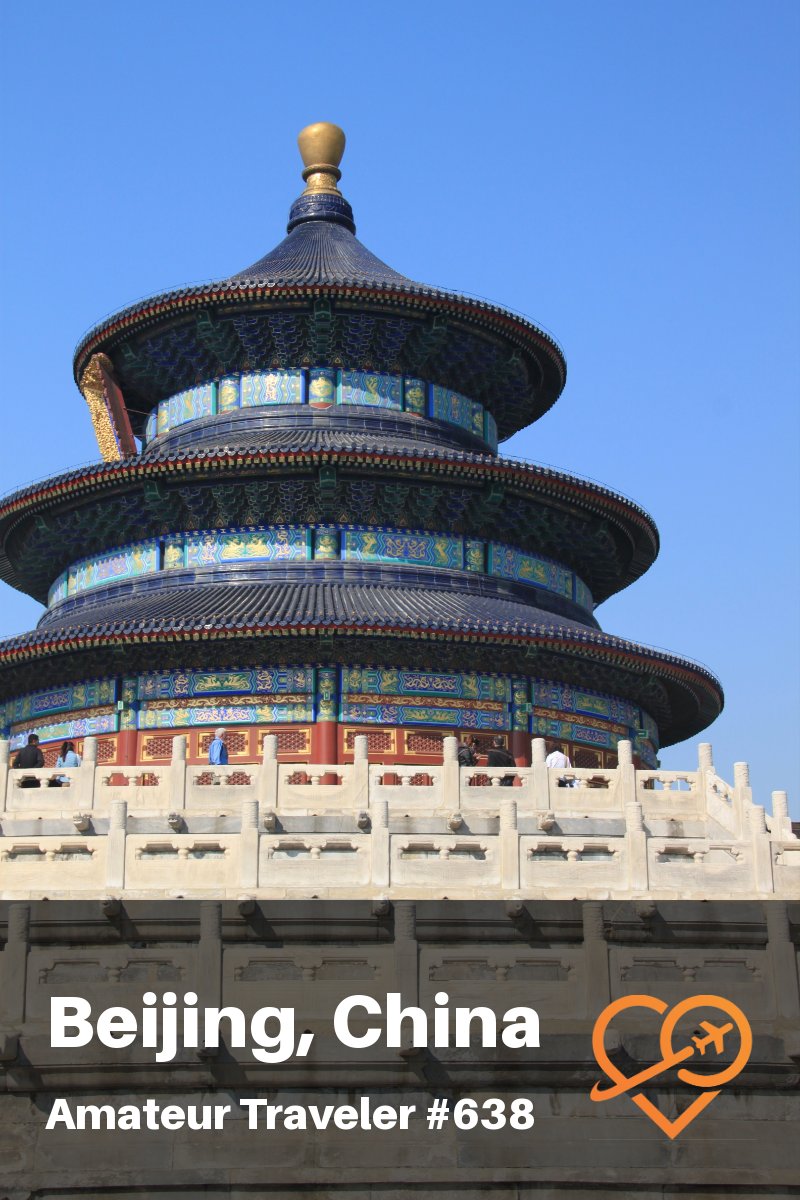
+Chris Christensen | @chris2x | facebook
Leave a Reply
Tags: audio travel podcast, beijing, china, great wall, podcast

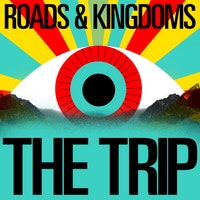

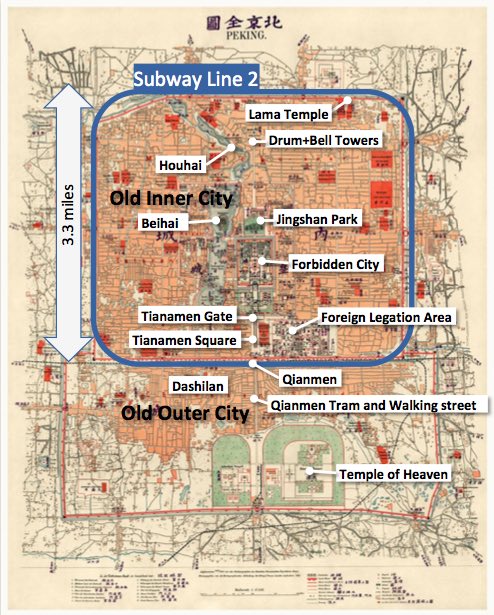
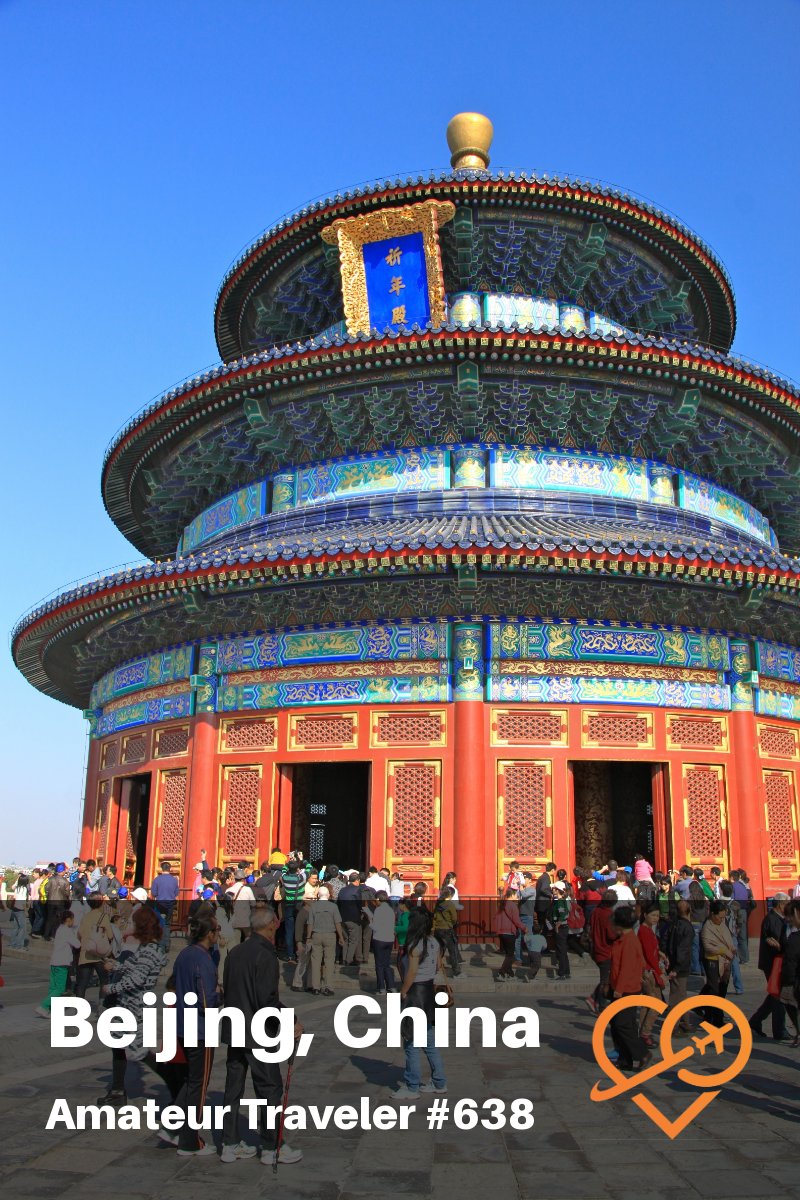
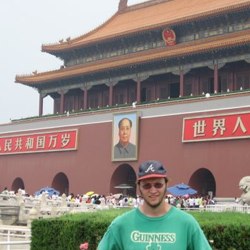 Independent Travel to Beijing, China – Episode 193
Independent Travel to Beijing, China – Episode 193 Travel to Beijing, China – Video Episode 69
Travel to Beijing, China – Video Episode 69 Traveling to Beijing, China with a Tour – Episode 187
Traveling to Beijing, China with a Tour – Episode 187 Intrepid Travel China – Review of China Highlights Tour (Beijing, Xi’an, Suzhou, Shanghai)
Intrepid Travel China – Review of China Highlights Tour (Beijing, Xi’an, Suzhou, Shanghai)
